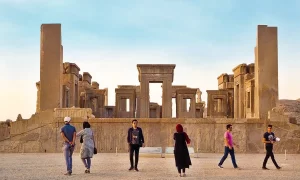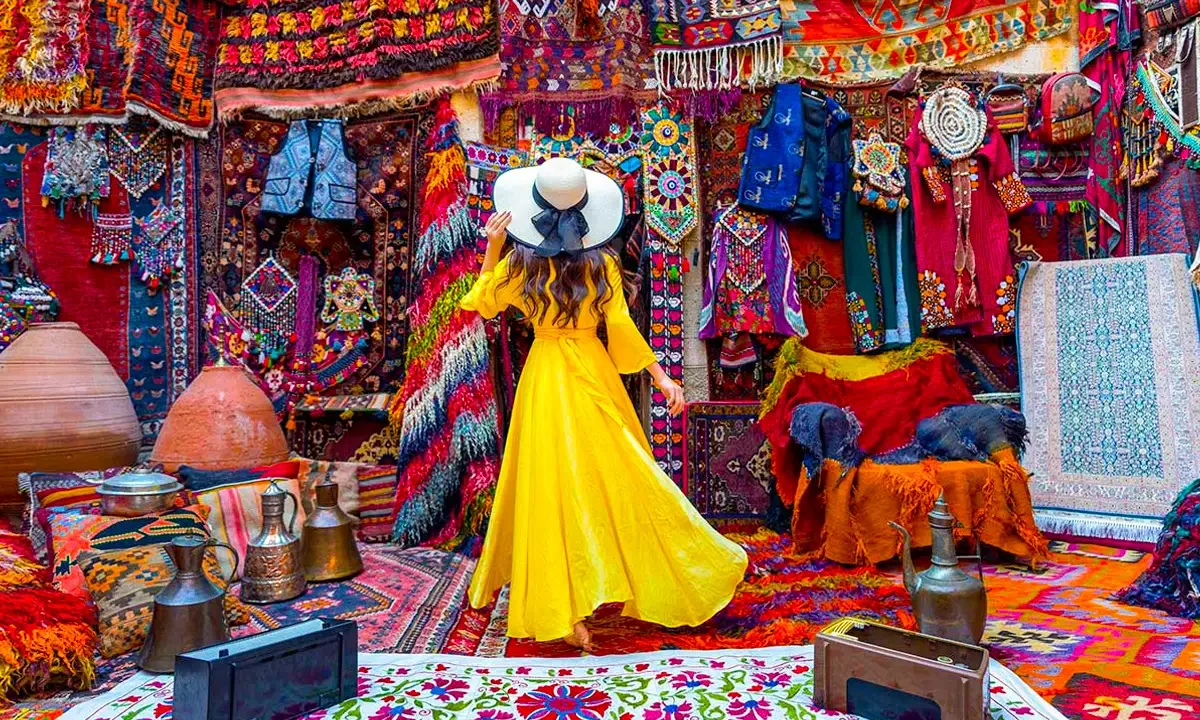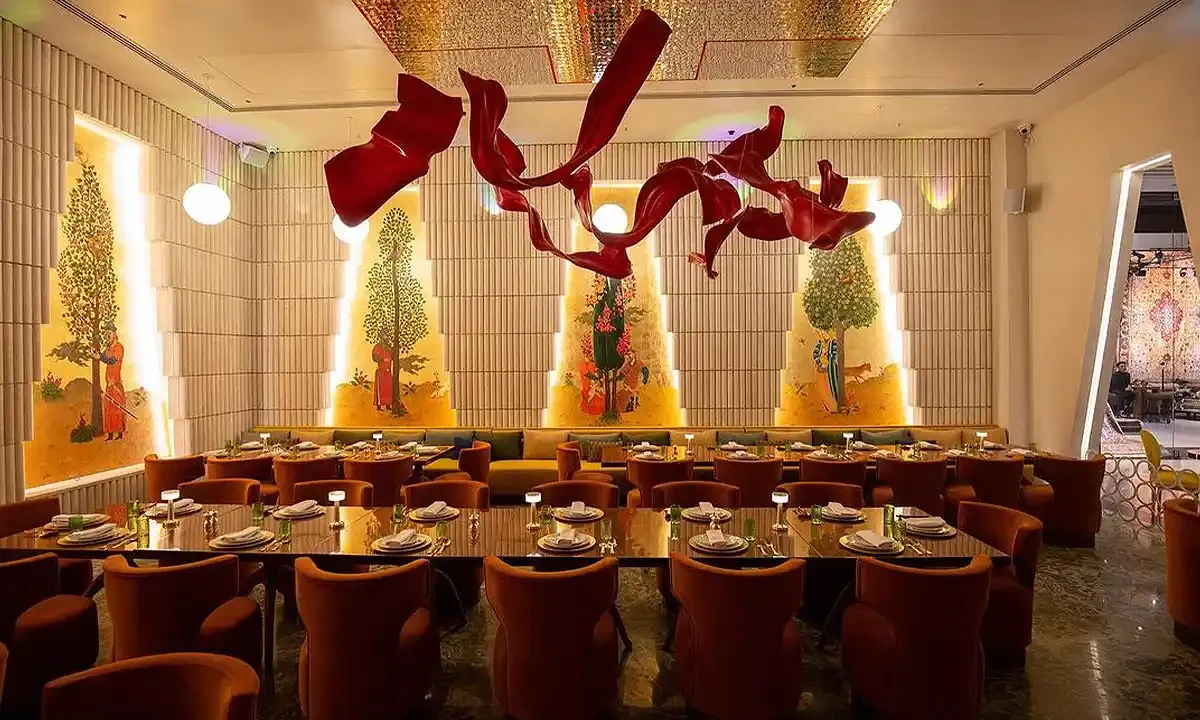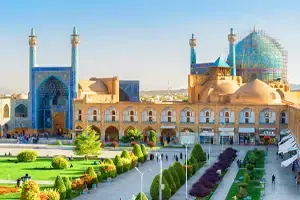Iran’s UNESCO World Heritage Sites
- ChoghaZanbil Ziggurat (Khuzestan)
- Naqsh-e Jahan Square (Isfahan)
- Persepolis (Shiraz)
- Takht-e Soleyman (West Azerbaijan)
- Arg-e Bam (Kerman)
- Pasargadae (Shiraz)
- Soltaniyeh Dome (Zanjan)
- Bisotun (Kermanshah)
- Qare Kelisa Complex (West Azerbaijan)
- Shushtar Historical Hydraulic System (Khuzestan)
- Tabriz Grand Bazaar (Tabriz)
- Sheikh Safi Al-Din Ardabili’s Shrine (Ardabil)
- Qabus Historical Tower (Gonbad-e Kavus)
- Jame Mosque (Isfahan)
- Golestan Palace (Tehran)
- Shahr-e Sukhteh (Sistan and Balouchestan)
- Meymand Village (Kerman)
- Shush or Susa (Khuzestan)
- Lut Desert (Central Iran)
- Sassanid Ancient Landscape (Bishapur, Fars)
- Oramanat (Kurdistan)
- The Hyrcanian Forests (Mazandaran Province)
- Trans-Iranian Railway
- Persian Caravanserais
- Persian Gardens
- Persian Qanats
- Yazd City
ChoghaZanbil Ziggurat
ChoghaZanbil Ziggurat is renowned as the prime place of worship in Persia which is the first registered heritage site of Iran by UNESCO as well. The history of this ancient ziggurat belongs to 1250 BC. The height of this ziggurat is estimated to be more than 50 meters containing various temples. This heritage is located in Shush’s urban in Khuzestan Province. The architecture of ChoghaZanbil is mind-boggling due to the smart construction owing to Its ancient background. The architect of the water disposal system and techniques of defense from natural disasters are showcased in this monument.

- ChoghaZanbil Address: 35 KM South East Shush, Khuzestan, Iran.
- Opening Hours: 8 AM to 7 PM
- Entrance Fee: Around 2$
Naqsh-e Jahan Square, Iran’s World Heritage Site
Naqsh-e Jahan Square, also known as Imam Square is located in the heart of Isfahan. The history of Naqsh-e Jahan dates back to the Safavid era. This complex is home to several historical attractions such as Aali Qapu Palace, Sheikh Lotfollah Mosque, Shah Mosque, and the Grand Bazaar of Isfahan. You will be astonished by Islamic art and calligraphy such as tilework, muqarnas, minarets, and manuscript illuminations used in the architecture of the Square, especially in mosques. As a World Heritage site, Naqsh-e Jahan offers a sensation of ancient Iran’s history and art.

- Naqsh-e Jahan Square Address: City Center of Isfahan, Iran.
- Opening Hours: 24/7
- Entrance Fee: Free
Persepolis, The Achaemenid Heritage
The history of Persepolis also known as Takht-e Jamshid belongs to 500 BC and continues up to 150 AC. Persepolis was the capital of the Achaemenian Dynasty which was ruined by Alexander the Great, the emperor of ancient Greece. Takht-e Jamshid is located in Marvdasht County in the neighborhood of Shiraz. Various ancient inscriptions discovered in this area retell valuable information about the Achaemenian empire, lifestyle, and governmental rules. The ideal seasons to visit this hidden gem are spring and autumn. As Persepolis is an outdoor sight, we recommend you take sunglasses, hats, and sun cream with you for the best pleasure.

- Persepolis Address: 11 KM North East Marvdasht, Fars Province, Iran.
- Opening Hours: 8 AM to 5 PM
- Entrance Fee: Around 1$
Takht-e Soleyman, The UNESCO World Heritage Site of Iran
This World Heritage Site is based in northeast Tekab, West Azerbaijan which is 124000 square meters wide. Takht-e Soleyman’s historical monuments date back to the Parthian, Sasanian, and Median era. In Addition, the Takht-e Soleyman complex includes a lake, a Zoroastrian fire temple, and the Tomb of Anahita. Takht-e Soleyman Lake is well-known because of the strange stories about it. Local people of Tekab believe that a part of the treasure of Cyrus the Great fell into this lake while he was at war with the Lydiah empire. This complex was registered as a UNESCO World Heritage Site in 2003.
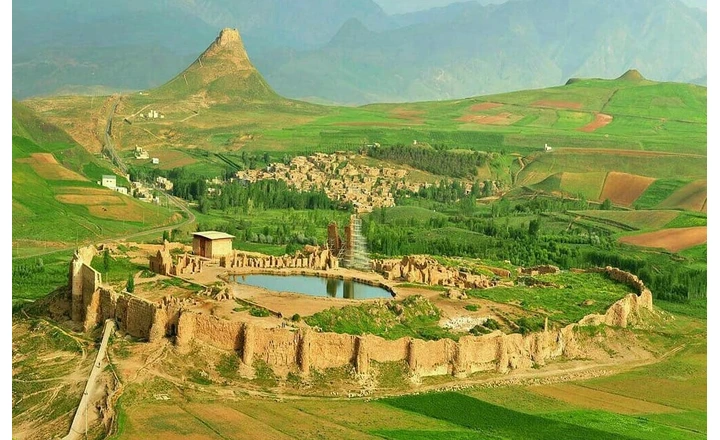
- Takht-e Soleyman Address: NosratAbad Village, 45 KM North East Tekab, West Azerbaijan, Iran
- Opening Hours: 9 AM to 7 PM
- Entrance Fee: Less than 1$
Pasargadae, Ancient Heritage of The Achaemenian
Pasargadae was the first Achaemenid dynastic capital. Pasargadae complex is home to the Tomb of Cyrus the Great besides more attractions namely the Private Palace, the Winged Man Petroglyph, Mozafari Caravanserai, and other monuments. This national heritage of Persia was inscribed as a UNESCO World Heritage Site in 2004. Pasargadae is renowned as the most popular tourist destination in Fars Province according to travel blogs.

- Pasargadae Address: SaadatShahr, Fars Province, Iran.
- Opening Hours: 8 AM to 7 PM in Summers / 8 AM to 5 PM in Winters
- Entrance Fee: Around 1$
Arg-e Bam, The World’s Biggest Mud-Brick Village
Arg-e Bam is located in the southern part of Kerman and was registered by UNESCO in 2004 under the criteria of its cultural significance. This monument was the world’s biggest mud-brick village but unfortunately due to the catastrophic earthquake of 2003, the Bam Citadel and the modern city of Bam were damaged considerably. After the earthquake, extensive national and international efforts were undertaken to reconstruct Arg-e Bam with traditional techniques and materials. One of the most amazing facts about the Bam Citadel is its complicated Qanat system which helps to irrigate the urban palms and farming lands.
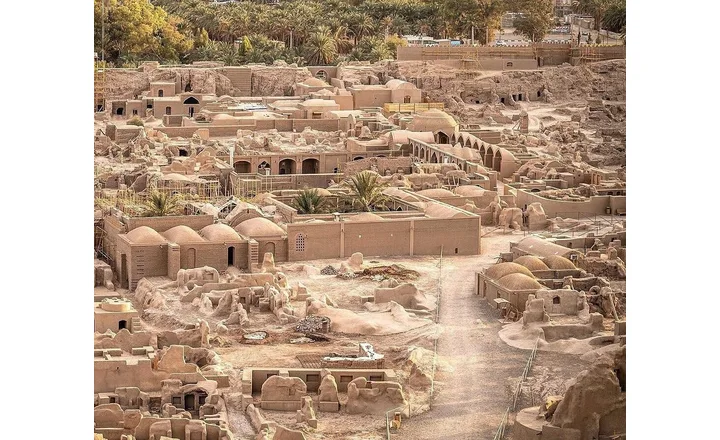
- Arg-e Bam Address: Bahman St, Bam County, Kerman, Iran.
- Opening Hours: 9 AM to 7 PM
- Entrance Fee: Less than 1$
Soltaniyeh Dome, One of The World’s Biggest Domes
Soltaniyeh Dome is located in Soltaniyeh County in Zanjan Province. The stunning Soltaniyeh Dome is the world’s 3rd biggest dome which is famous for its brick architecture. The brick dome of Soltaniyeh is constructed on the tomb of Soltan Mohamad Khodabandeh, one of the Ilkhanate emperors. This site has lots of floors and it is hard to get well around it for the elderly. This monument is more than 700 years old and stands adjacent to the other spectacular domes in Iran.

- Soltaniyeh Dome Address: Gonbad St, Soltaniyeh County, Zanjan Province
- Opening Hours: 8 AM to 6:30 PM (Sat-Thu) / 9 AM to 6:30 AM (Fri)
- Entrance Fee: Around 1$
Bisotun, A UNESCO Heritage of Kermanshah
Bisotun inscription is a multi-lingual monument located in Kermanshah Province. The Inscription of Bisotun was intended to commemorate the victory of Darius I over Gaumata around 522 BC. This monument is written in 3 different cuneiform script languages: Old Persian, Elamite, and Babylonian. The UNESCO World Heritage of Bisotun complex also includes other historical sights such as the Herculoids Statue, Abbasi Caravanserai, Mehrdad II Inscription, Sheykh Alikhan Inscription, and other attractions.

- Bisotun Address: Bisotun County, Kermanshah, Iran.
- Opening Hours: 8 AM to 7 PM
- Entrance Fee: Around 2$
Qare Kelisa Complex
This complex includes 3 different Cathedrals in separate locations. Qare Kelisa or the Thaddeus Cathedral, Monastery of Saint Stepanos, and the Chapel of Dzordzor are the UNESCO World Heritage Sites of Qare Kelisa Complex. The Monastery of Saint Stepanos is the most popular one across the loving Armenian society of Iran. This complex was inscribed as a World Heritage Site in 2008.
- Thaddeus Cathedral Address: Qare Kelisa Village, 20 KM North East of Chaldoran County, West Azerbaijan, Iran.
- Monastery of Saint Stepanos Address: 17 KM West of Jolfa City, East Azerbaijan, Iran.
- Chapel of Dzordzor Address: Baron Village Urban, 12 KM North West Qare Kelisa, Maku County, West Azerbaijan, Iran.
Shushtar Historical Hydraulic System
This stunning monument of Shushtar was constructed in the Achaemenid era (550-330 BC) and was developed in the Sassanid era after centuries. The UNESCO World Heritage Site of Shushtar Historical Hydraulic System is an incredible example of water management in ancient engineering. It also represents the social significance of water management in ancient societies. This specific attraction is located in Khuzestan Province adjacent to the other heritage sites.

- Shushtar Historical Hydraulic System Address: Shariati St, Shushtar, Khuzestan, Iran.
- Opening Hours: 24/7
- Entrance Fee: Free
The Grand Bazaar of Tabriz
Tabriz Historic Bazaar Complex is the world’s biggest roofed bazaar and the oldest bazaar of the Middle East. The Grand Bazaar of Tabriz is not only a trade center nowadays, but it is a renowned tourist attraction of Tabriz hosting a historic mosque and school as well. This ancient bazaar has innumerable shops where you can find Persian carpets, pottery, leather, and other handicrafts and souvenirs of Tabriz.
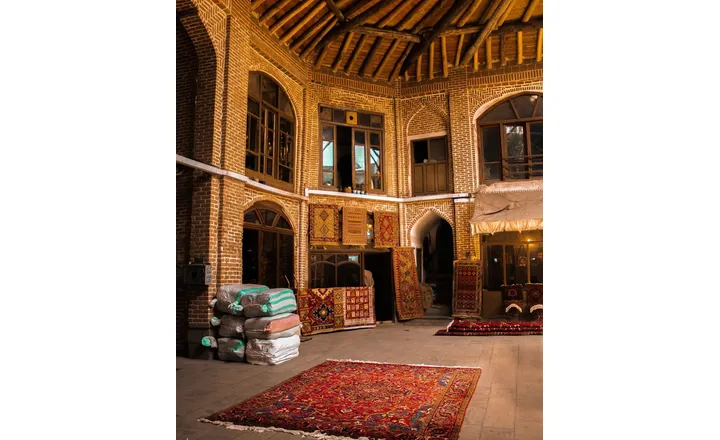
- Tabriz Grand Bazaar Address: Tabriz city center, East Azerbaijan, Iran.
- Opening Hours: 9 AM to 5 PM
- Entrance Fee: Free
Sheikh Safi Al-Din Ardabili’s Shrine
This shrine was designated a UNESCO World Heritage Site in 2010 which is dedicated to Sheikh Safi Al-Din Ardabili, the founder of the Safavid dynasty. This historic construction is an illustration of Islamic architecture and Sufi spiritual values. While visiting the Sheikh Safi Al-Din Ardabili’s shrine, you will be amazed by the intricate tilework, calligraphy, and muqarnas of the building which are the symbols of Iranian architecture.

- Sheikh Safi Al-Din Ardabili’s Shrine Address: Sheikh Safi St, Ardabil, Iran.
- Opening Hours: 8 AM to 7:30 PM in Summers / 8 AM to 5:30 PM in Winters
- Entrance Fee: Around 2$
Qabus Historical Tower
Gonbad-e Qabus or Qabus Tower is located in Golestan Province in the north of Iran. This Tower showcases the advanced architectural skills of Iranians in the Ziyarid dynasty. Qabus Tower stands approximately 50 meters in height fully constructed of fired brick on a hill. Many people believe that the Tomb of the Ziyarid ruler, Qabus ibn Wushmgir is inside this monument.

- Qabus Historical Tower Address: Baq Melli, Gonbad-e Kavus city, Golestan, Iran.
- Opening Hours: 9 AM to 7 PM
- Entrance Fee: Around 1$
Jame Mosque of Isfahan
The main construction of Jomeh Mosque of Isfahan, Atigh Mosque, or Jame Mosque of Isfahan was built in the Seljuk Empire era however, was reconstructed and finished in the Safavid era. This mosque is one of the most significant symbols of Islamic-Iranian architecture sites across all of the religious monuments all over Iran. Jame Mosque was recognized as a UNESCO World Heritage Site in 2012.
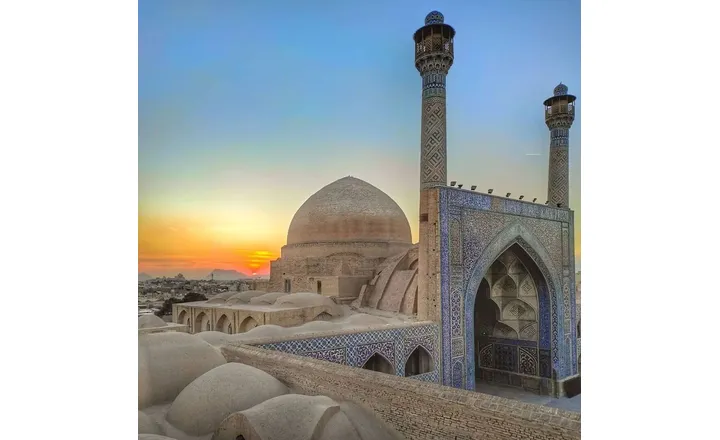
- Jame Mosque of Isfahan Address: Allameh Majlesi St, Isfahan, Iran.
- Opening Hours: 9 AM to 11 AM – 1 PM to 4 PM
- Entrance Fee: Around 1$
Golestan Palace of Tehran
The Golestan Palace Complex consists of several buildings set around an eye-catching garden. The palace includes a series of decorated structures such as the Marble Throne (Takht-e Marmar), the Edifice of the Sun (Shams-ol Emareh), and the Pond House (Howz Khaneh) among others. You can explore the royal halls and gardens to enjoy the atmosphere of this museum which narrates a story from 400 years ago. This palace is located in the center of Tehran and is the best option while wandering through the Grand Bazaar of Tehran.

- Golestan Palace Address: Panzdah-e Khordad St, Tehran, Iran.
- Opening Hours: 9 AM to 7 PM
- Entrance Fee: Around 2$
Shahr-e Sukhteh
This World Heritage Site is known as one of the most ancient cities all around the globe. Archeologists estimate that the history of this city dates back to 6000 years ago. Shahr-e Sukhte is located in the southern part of Zabol City in Sistan and Balouchestan Province where you can easily access there by renting a car. Regarding the discoveries of archeologists, Shahr-e Shukhte is known as a modern city in contrast with others in those periods. As an example, some findings can prove the eye and brain surgical operation in Shahr-e Sukhte.

- Shahr-e Sukhte Address: Zabol to Zahedan Road, Sistan and Balouchestan, Iran.
- Opening Hours: 8 AM to 12 PM – 4 PM to 7 PM
- Entrance Fee: Around 1$
Meymand Village in Kerman
Meymand also Maymand Village was inscribed in the UNESCO World Heritage Site list in 2015. This rock village is located in Shahr-e Babak and is renowned as the first human residence in history. The homes in Meymand which are carved from rock show extraordinary human interaction with the environment. The best seasons to visit Meymand Village are spring and autumn due to the hot weather of Kerman Province.

- Meymand Village Address: Shahr-e Babak County, Kerman, Iran.
- Opening Hours: 24/7
- Entrance Fee: Free
The Ancient City of Susa
The Shush City is located in Khuzestan Province with a history that belongs to several dynasties namely The Achaemenian, The Sassanid, The Parthian, and The Seleucid. Shush is known as Susa internationally and includes several structures and areas such as the Apadana of Darius, The Acropolis, The Royal City, and The Artaxerxes’ Palace. Additionally, The Code of Hammurabi which is one of the oldest deciphered writings in the world is discovered in Susa.
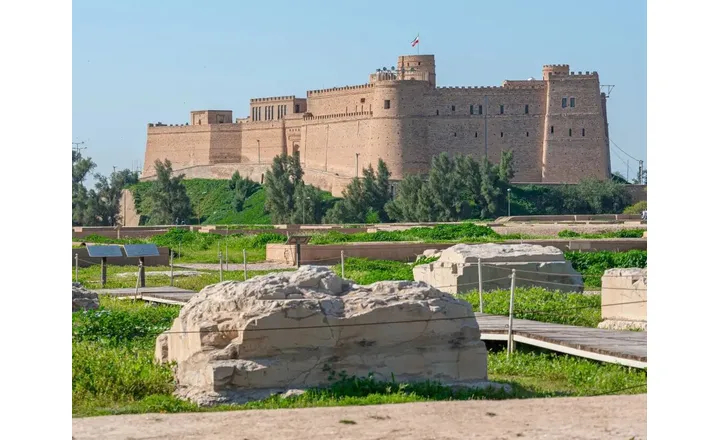
- Shush or Susa Address: Khuzestan, Iran.
- Opening Hours: 9 AM to 5 PM
- Entrance Fee: Around 1$
Lut Desert, The Central Desert of Iran
Lut is the world’s 25th biggest desert and was registered as a natural UNESCO World Heritage of Iran in 2016. The archeologists have discovered numerous ancient items in this desert which belongs to more than 4000 years ago. You can find some of the world’s tallest Sand Dunes in Lut deserts which are up to 300 meters tall. Furthermore, the desert is home to Gandom Beryan, The world’s hottest zone. The surface temperature of Gandom Beryan which is recorded by satellite measurements, illustrates that the temperature in this area reaches up to 70C in summer.
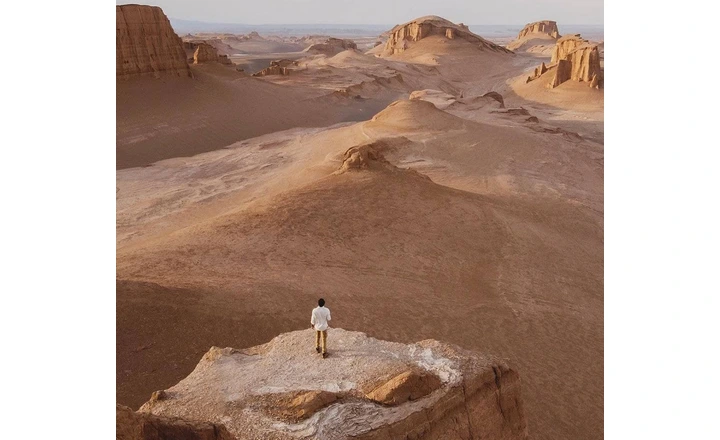
- Lut Desert Address: Located between Sistan and Balouchestan, South Khorasan, and Kerman, Iran.
The Sassanid Ancient Landscape
This is the last inscribed UNESCO World Heritage of Iran in 2018. Firouz Abad, Sarvestan, and Bishapour all located in the south of Fars Province are host to this ancient heritage. This complex includes 2 ancient cities, 2 inscriptions, 2 palaces, a cave, and a citadel. We will describe them in detail below
- Qale Dokhtar or Dokhtar Citadel: Firouz Abad to Kovar Road, Fars, Iran.
- Shapour Cave: 4 KM to Tang-e Chogan, 30 KM North of Kazeroun, Fars, Iran.
- Victory of Ardashir Inscription: Firouz Abad to Shiraz Road, Fars, Iran.
- Ardashir Babakan Empire Inscription: Firouz Abad, Fars, Iran.
- Ardashir Babakan Palace: 3 KM North of Firouz Abad, Fars, Iran.
- Sarvestan Sassanid Palace: 14 KM South of Sarvestan, Fars, Iran.
- Bishapour Ancient City: Fars, Iran.
- Gour Ancient City: 5 KM West of Firouz Abad, Fars, Iran.

Oramanat Takht of Kurdistan
Oramanat, Horaman or also Uraman in native Persian, is located between Kurdistan and Kermanshah, in western Iran. Oramanat is famous for its steep slopes and narrow valleys which witness the Kurdish local lifestyle and living in challenging geographical conditions. There are around 700 villages in this area and the most ancient one is called Hejij where archeologists have discovered antiques from the Paleolithic.

- Oramanat Address: Takht-e Horaman, South East Marivan City, Kurdistan, Iran.
- Opening Hours: 24/7
- Entrance Fee: Free
The Hyrcanian Forests, A Natural UNESCO World Heritage of Iran
The Ancient woodlands of The Hyrcanian Forests date back to over 50 million years ago. These forests stretch along the southern coast of the Caspian Sea and span from Azerbaijan Province to Gilan, Mazandaran, and Golestan. There are over 3200 plant species and a wide range of animal species namely the Persian leopard, the extinct Persian tiger, the lynx, the brown bear, and different species of deer. By visiting some parts of this natural World Heritage of Iran you can enjoy the most scenic roads of this land.

- The Hyrcanian Forests Address: Azerbaijan, Ardabil, Gilan, Mazandaran, Golestan, and Semnan Provinces.
The Trans-Iranian Railway
This train route was built a hundred years ago, architectured and engineered by German and American engineers. This railway was first built for England’s benefit and occupation of Iran during World War II. Afterward, it specifically affected the transportation system all over Iran. The Trans-Iranian Railway starts from the Caspian Sea in Gaz Harbor and leads to Imam Khomeini Harbor in Bandar Abbas.

Persian Caravanserais
There are 57 specific caravanserais located in 24 Provinces of Iran. Each of these Persian Caravanserais has its architecture which shows the richness of Iranian art. We have listed all of the Iranian UNESCO World Heritage caravanserais below
- Isfahan Province: Noshirvan, SheiykhAli Khan, Maranjab, Amin Abad, Gabr Abad, Mahyar, Neyestanak, Gaz, Kouhpaye.
- Yazd Province: Anjireh brick and rock caravanserais, Zein-o Din, Meybod, Kharanaq, Rashti.
- Khorasan Razavi Province: Fakhr-e Davoud, Abbas Abad, Mazinan, Fakhrabad, Robat Sharaf, Zaferanieh, Mehr.
- Qom Province: Dirgachin
- Fars Province: IzadKhast
- Tehran Province: Parandia rock castle, Ahovan
- Alborz Province: Yengeh Emam
- South Khorasan Province: Sarayan, Deh Mohamad, Chehel Payeh
- North Khorasan: Robat Qoli
- East Azerbaijan: Jamal Abad, Khajeh Nazar, Goije Bel
- West Azerbaijan: Khoy, Khan
- Semnan Province: Miami, Abbas Abad, Miyandasht, Qasre Bahram
- Hamedan Province: Farsfaj, Taj Abad
- Kohgilouye and BoyerAhmad Province: Dehdasht
- Kermanshah Province: Bisotun
- Kerman Province: GanjAli Khan, Chah Kouran
- Ardabil Province: Saein
- Gilan Province: Titi
- Markazi Province: Bagh Sheiykh
- Hormozgan Province: Bastak
- Boushehr Province: Borazjan
- Khuzestan Province: Afzal
- Lorestan Province: Cheshmak
- Qazvin Province: Saad-o Saltaneh

The Ancient Persian Gardens
There are 9 Persian Gardens inscribed in UNESCO World Heritage Sites. The history of these stunning gardens dates back to the Achaemenian, Safavid, and Qajar eras. Persian Gardens are well known for their distinctive architecture and irrigation system. Additionally, all these gardens were used as residences for various Persian Empires. The 9 Persian World Heritage Gardens are
- Pasargad Garden, Marvdasht, Fars (The Achaemenian era)
- Eram Garden, Shiraz, Fars (16th Century)
- Shahzadeh Mahan Garden, Kerman (The Qajar era)
- Chehel Sotoun Garden, Isfahan (The Safavid era)
- Fin Garden, Kashan, Isfahan (The Safavid era)
- Abbas Abad Garden, Behshahr, Mazandaran (The Safavid era)
- Dowlat Abad Garden, Yazd (The Afsharid era)
- َAkbariyeh Garden, Birjand, South Khorasan (The Zand era)
- Pahlavan Pour, Mehriz, Yazd (The Qajar era)

Persian Qanats
Persian Qanat or the ancient irrigation system of Iran is world renowned due to its unique architecture. Some of these historic Qanats namely QasbeAbad in Gonabad belong to more than 2500 years ago (The Achaemenian era). Also, Zarch Qanat in Yazd dates back to 3000 years ago and is the longest Qanat among all others. Here are the 11 Persian Qanat listed in UNESCO Heritage sites
- QasbeAbad (Gonabad, Khorasan Razavi)
- Zarch (Yazd)
- Akbar Abad (Barvat, Bam, Kerman)
- Qasem Abad (Barvat, Bam, Kerman)
- Moun Ardestan (Isfahan)
- Hasan Abad (Mehriz, Yazd)
- Ebrahim Abad (Arak, Markazi)
- Baladeh Ferdows (South Khorasan)
- Mozd Abad (Isfahan)
- Vazvan (Isfahan)
- Goharriz (Joupar, Kerman)

The Historic City of Yazd
Once you read about this ancient city, you may ask is Yazd the second historical city in the world? Yes! The city of windcatchers, Yazd, is known as the world’s second ancient city and is hosting innumerable historic sites. Yazd is home to several ancient monuments, traditional bazaars, windcatchers, tombs, and fire temples which are registered as tangible cultural heritages of Iran. Thousands of Visitors from all over the globe get to this city annually to enjoy the spectacular architecture of the old texture of Yazd and its pure history.

Intangible Cultural UNESCO World Heritage Site of Iran
- Radif; Iranian Traditional Music (2009)
- Ritual Performance Art of Taazieh (2010)
- Zourkhane and Pahlevani Ethic (2010)
- Traditional Music of North Khorasan (2010)
- Carpet Weaving Skill of Kashan (2010)
- Carpet Weaving Skill of Fars (2010)
- Persian Naqqali, Traditional Dramatic Storytelling (2011)
- The Skill of Building Lenj and Seacraft in the Persian Gulf (2011)
- Carpet Cleaning Ethic of Mashhad Ardehal (2012)
- Lavash Baking Method (2016)
- Norouz, The Ancient New Year of Iranians (2016)
- The Art of Creating and Playing Kamancheh (2017)
- Chogan, A Type of Iranian Traditional Sport (2017)
- The Art of Creating and Playing Dotaar (2019)
- Persian Painting (2020)
- The Ethic of Worship The Thaddeus Cathedral (2020)
- Persian Calligraphy (2021)

Last words
Majestic Iran is home to 27 tangible cultural heritage sites including 2 natural sites as well, and 17 intangible cultural heritage sites which are recognized as UNESCO World Heritages. Around 161 countries are registered as UNESCO World Heritage Sites and Iran is at the 10th Grade. In conclusion, we recommend you take a trip to Iran and organize an itinerary for at least 14 days to visit the most popular ancient and natural destinations. You will be narrating your trip to Iran to anyone who is a fan of this stunning land undoubtedly.
FAQ
Here are some of the frequently asked questions about the UNESCO World Heritage Sites of Iran.
How many UNESCO World Heritage Sites are in Iran?
There are 27 tangible UNESCO world heritage sites all around Iran. Also, there are 17 intangible heritages relating to Iran inscribed in UNESCO.
How many days does it take to visit UNESCO Heritage Sites in Iran?
Iran’s UNESCO world heritage sites are located in 24 different provinces of this land. You should spend at least 30 days in Iran to visit almost all of the sites.

